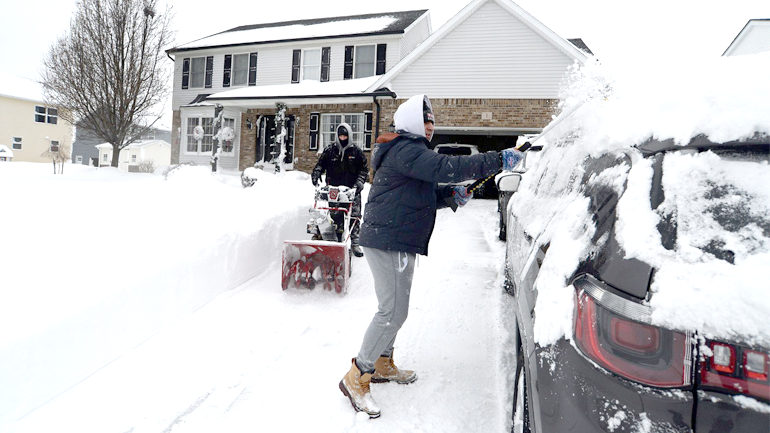
Winter Storm Elliott likely delivered insured losses of $5.4 billion across 42 states after sweeping the bulk of the United States at the peak of the Holiday season, Karen Clark & Co. estimates based on its high-resolution US winter storm reference model.
Elliott brought frigid arctic air southward into the US over the Christmas period, plummeting temperatures to under 20°F below average across most of the Eastern US.
The storm caused significant damage across much of the country, even stretching northward into Canada and south over the Mexican border.
But while this was a very wide spreadsheet storm, impacting 42 US states, early data from modelling agencies suggests that this will not be a significant event for the reinsurance market, particularly when compared February 2021’s winter storm Uri.
KCC’s estimate of $5.4 billion would put Elliott more in line with the winter storms of 1983 and 1989, with 50% of the loss expected to fall to commercial insurers.
The main cause of the loss is thought to be burst pipes in both residential and commercial buildings from the freezing temperatures, which will drive significant disruption and impact to infrastructure.
From December 21 to 26, 2022, a historic extratropical cyclone created winter storm conditions, including blizzards, high winds, snowfall, or record cold temperatures across the majority of the United States and parts of Canada.

Areas which experienced blizzard conditions included parts of Minnesota, Iowa, Wisconsin, Michigan, Ohio, New York and Ontario, with the Buffalo area of New York and the Fort Erie and Kingston areas of Ontario experiencing almost two full days of blizzard/zero-visibility conditions.
The cold wave affected all U.S. states from Colorado to the eastern seaboard and as far south as Miami, Florida. Fifty-five million people were under wind chill alerts the morning of December 25.
The storm and the related cold wave killed at least 95 people, with 41 of those deaths occurring in the Buffalo area where lake-effect snowfall exceeded 55 inches over the five-day period. The storm caused extensive vehicle pileups and road closures, particularly in the areas affected by blizzards or adjacent to those areas, with a complete driving ban imposed in Buffalo for five-and-a-half days.
Due to the storm, in excess of 18,200 flights were cancelled in the U.S. for between December 22 and 28, while hundreds more were cancelled in Canada. Buffalo-Niagara International Airport was the most severely affected as it was completely shutdown for five days.
Numerous inter-city passenger rail trips were delayed or cancelled in the U.S., while in Ontario, Via train service between Toronto and Montreal or Ottawa was completely suspended for over 2 days due to a derailment. About 6.3 million households in the U.S. and 1.1 million in Canada were without power for some part of the storm.




